Snapshots of the Boston bar Playland taken by bartender Jim McGrath and friends beginning in 1958 and ’59 show a drag queen leaning on a jukebox under clouds of balloons, and men dressed up as monsters for what looks like a Halloween party, and men in grinning groups embracing as they pose in front of Christmas decorations. In scholar and activist Patricia A. Gozemba’s black and white snapshots from a 1983 reunion of “working-class lesbians” at Fran’s Place in Lynn, women in suits and sweatshirts and permed hair smile and dance as couples or lean in together around tables full of drinks with cigarettes pinched between their fingers.
These amazing personal snapshots come from The History Project, an archive begun in 1980 to preserve New England LGBTQ+ histories, and are featured in the exhibition “As the World Burns: Queer Photography and Nightlife in Boston,” at the School of the Museum of Fine Arts (SMFA) at Tufts gallery, 230 the Fenway, Boston, from Jan. 24 to April 21, 2024. The one-room exhibit offers a striking window into parts of our community’s history often overlooked by conventional tellers.
“As the World Burns” showcases photography of queer life and liberation in Boston primarily from the 1970s to ‘90s—as well as publications, video, ceramics, and textiles—by Craig Bailey, Bobby Busnach, Nick DeWolf, Sherry Edwards, Avram Finkelstein, Allen Frame, Jason Byron Gavann, Nan Goldin, Patricia A. Gozemba, Jim McGrath, Philip Phlash, Angela Russo, Gail Thacker, Shellburne Thurber, Geraldine Visco, Christian Walker, and Mark Winer.
![Patricia A. Gozemba, "Untitled [Fran’s Place]," 1983, black and white photograph. (Courtesy of The History Project)](https://gregcookland.com/wonderland/wp-content/uploads/2024/04/PatGozemba_FransPlaceW.jpg)
This was the period of Boston’s Combahee River Collective and their influential 1977 statement on Black feminism, lesbianism, and intersectionality: “We are actively committed to struggling against racial, sexual, heterosexual, and class oppression, and see as our particular task the development of integrated analysis and practice based upon the fact that the major systems of oppression are interlocking. … If Black women were free, it would mean that everyone else would have to be free since our freedom would necessitate the destruction of all the systems of oppression.”
“Boston was the most sophisticated place [in the 1970s and ‘80s] when it came to gay literature, gay activism, gay culture, gay criticism,” says Jackson Davidow, who curated the exhibition. “I think it had to do with the students and Boston being a university town that wasn’t fully gentrified yet. I think it had a lot do with the counterculture of the ‘60s,” as gay liberation movements build upon the preceding civil rights movement.

Walker (1953–2003) is also the subject of a companion exhibition in the neighboring gallery, “Christian Walker: The Profane and the Poignant.” The Springfield native moved to Boston in 1974 before relocating to Atlanta in the mid ‘80s. The Walker survey was originally organized by Davidow and Noam Parness for New York’s Leslie-Lohman Museum of Art. Both shows appear here with assistance from Tufts University Art Galleries Curator Laurel V. McLaughlin.
Davidow says the timeframe of “As the World Burns” roughly corresponds to when Walker was in Boston, but also Davidow was “wanting to think more about ‘70s and ‘80s gay life and sex culture before the onset of AIDS.”
We see people finding friends and lovers and joy, people redefining themselves and forging their own communities at Boston area bars and nightclubs and pornographic movie theaters, sheltered from the virulent, violent homophobia of the dominant culture. There are furtive glimpses and people striking poses as well as unguarded smiles. “This was street family,” Jason Byron Gavann told Davidow in 2023.

The photos come from the time before the U.S. Supreme Court ruled in 2003 that anti-sodomy laws used to target queer people were unconstitutional. Only this January, did Massachusetts legislators begin the process to strike such laws from the books.
A 1973 photo by Allen Frame shows Nan Goldin photographing at Boston drag bar The Other Side. “Being at The Other Side was very empowering because it was our world,” Bobby Busnach told Brian Halligan in a 2013 interview for The History Project.
Other photos document the Boston bar Together, the Boston lesbian bar The Saints, and Gay Liberation Front’s dance parties at Boston’s Charles Street Meeting House, where Gay Community News first operated. Photos by Gail Thacker and Philin Phlash document a 1980 fashion show at the Boston punk and new wave nightclub Spit—“from laboriously getting ready to go out to the aftermath of the evening’s festivities: washing body paint off in the tub, exhausted, or lying in the arms of a lover,” a gallery sign explains.
For many, these activities were “very undercover,” as Craig Bailey says. “I wanted some separation in my life. I wasn’t, as they say now, bringing my whole self to work. … That’s why there were so many bars. Because that’s where people could go and feel safe. Now that we’re more readily accepted in the general culture those bars have disappeared slowly.”
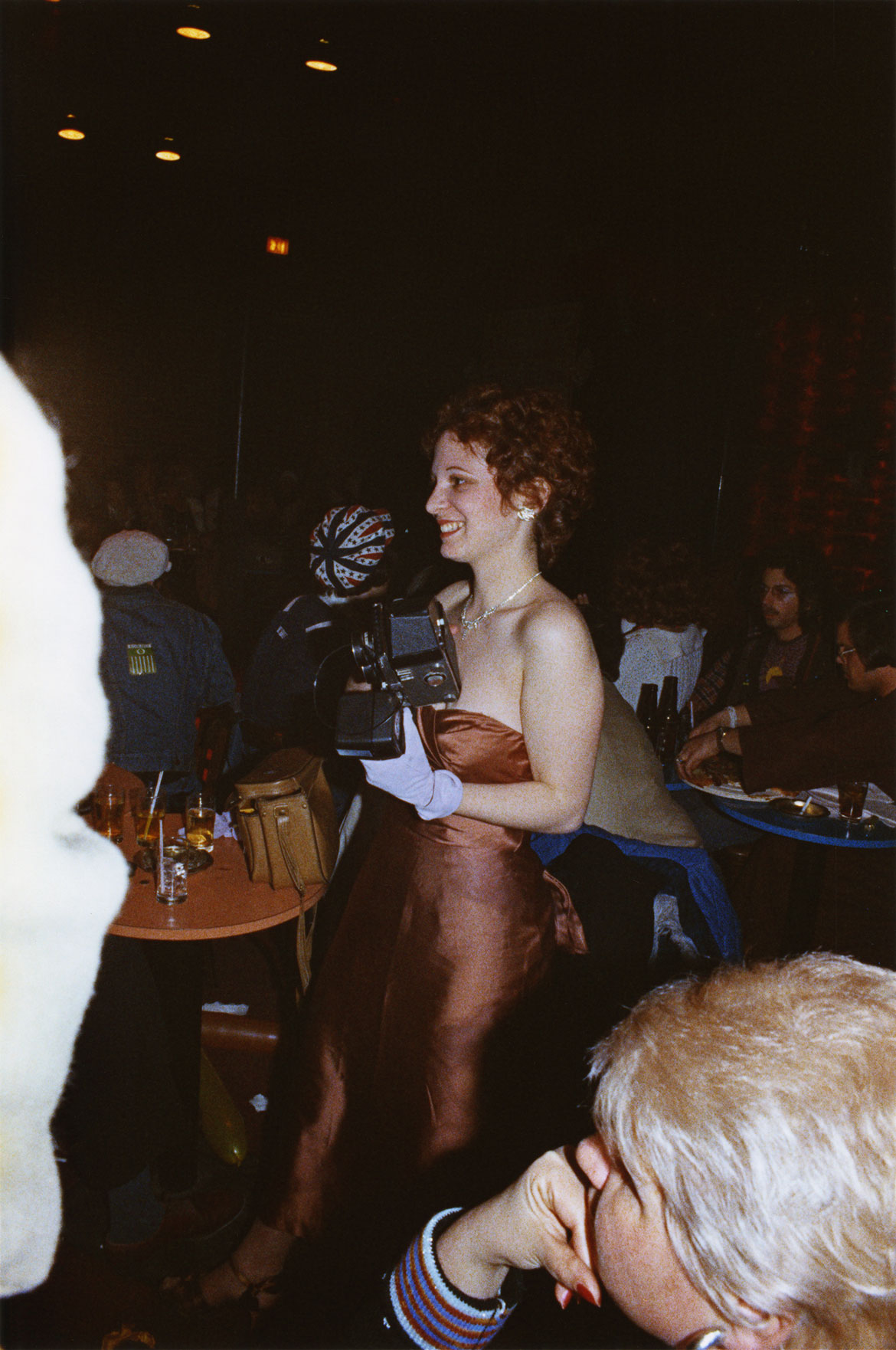
“As the World Burns” looks at scrappy exuberant communities formed around local art schools—the Museum School, Massachusetts College of Art and Design, New England School of Photography, Boston University. The exhibition digs into the photography published by the local gay press—Gay Community News, Fag Rag, Boston Gay Review, Bad Attitude. “The press was really significant for visualizing what lesbian and gay life looked like in the ‘70s and ‘80s,” Davidow says. And the exhibition highlights festive, personal snapshots that, Davidow says, are “much more about preserving the immediacy of moments and documenting spaces.”
There was a danger inherent in being seen in these photos as the dominant culture threatened queer folks then—and now. “I do think there’s a tension between the desire to protect people and the desire to make public these amazing people and amazing experiences,” Davidow says.
Walker photographed in the Combat Zone, Boston’s red light district of strip clubs, burlesque bars and porno movie houses. In 1982, he also recorded friends in Fort Hill Faggots for Freedom, “a radical living collective of more than 20 gay people” in Boston’s Roxbury neighborhood.
The grainy, almost spectral photos of Walker’s 1983-84 “The Theater Project” survey the Pilgrim Theater, including “bathrooms where men and trans people cruise and hook up,” according to a gallery sign. Located in the Combat Zone, the theater screened straight porn, but “attracted audiences overwhelmingly in search of homosexual encounters—even if many of these men were closeted in the straight world and did not identify as gay.”
When some of these photos were published in Fag Rag in 1983, Boston Licensing Commissioner Joanne Prevost Anzalone got a copy and used it as evidence of “kinky gays” to shut the theater down for some days, Davidow says. Walker told Gay Community News at the time: “It’s a very outrageous situation that a document, a piece of art, is used as a way of harassing men. . . . There’s a strong historical basis for sex going on in theaters in Boston—it’s been going on for 40 years.”

The 1980s were also the dawn of the AIDS epidemic, and touring the exhibition, it can be hard not to feel haunted by all the lives lost—including Polaroid photographer and Super 8 filmmaker Mark Morrisroe, who is depicted here in the photos of that 1980 fashion show at Spit, and died of AIDS in 1989 at age 30.
Craig Bailey moved to the Boston suburbs in 1982 when he was hired as a customer service rep for an auto manufacturer. After a buyout in 1989, he moved to Somerville then Boston, and took a photography class at the Boston Center for Adult Education that proved to be a launching pad. He photographed events, freelanced for newspapers, and found part-time community outreach work, especially around AIDS prevention.

In the 1990s, as the AIDS pandemic entered its second decade, people rethought safe sex education—experimenting with sexy how-tos that also tried to reach more diverse audiences. An example is the explicit sexy photography in the brochure “Color Me Healthy: Safer Sex Guide for Gay Men,” which was published by the Fenway Community Health Center in 1994. It was conceived by Craig Hickman, now a Maine state senator, to reach people of color. Bailey, who took the brochure’s photos, says, “The idea was, ‘Look, if you’re trying to tell people something, you need to speak plainly and directly,’ and that was what that brochure was trying to do.”
“Craig Hickman pulled all of that together. We shot it in my living room,” Bailey recalls. He developed the photos himself at the Boston Photo Co-op in Jamaica Plain. “That was the first roll of film I developed because I didn’t want to hand it to someone else and say, ‘Can you develop this for me?’”
Bailey also photographed theatrical productions and made publicity photos for The Theater Offensive, an LGBTQ+ company, and other theater troupes. “I entered into what I believe to be a cultural renaissance in terms of the gay Black community in Boston,” Bailey says. “So many of the people I knew, friends in community, were bringing everything they had to the table in so many ways, all the creativity they had.”
Related:
• Craig Bailey’s ‘Faces of AIDS’ Photographs Of ‘My Friends That I Lost’
• ‘Eulogy For The Dyke Bar’ Ponders The ‘Mass Closing’ Of Lesbian Bars
If this is the kind of coverage of arts, cultures and activisms you appreciate, please support Wonderland by contributing to Wonderland on Patreon. And sign up for our free, occasional newsletter so that you don’t miss any of our reporting. (All content ©Greg Cook 2024 or the respective creators.)
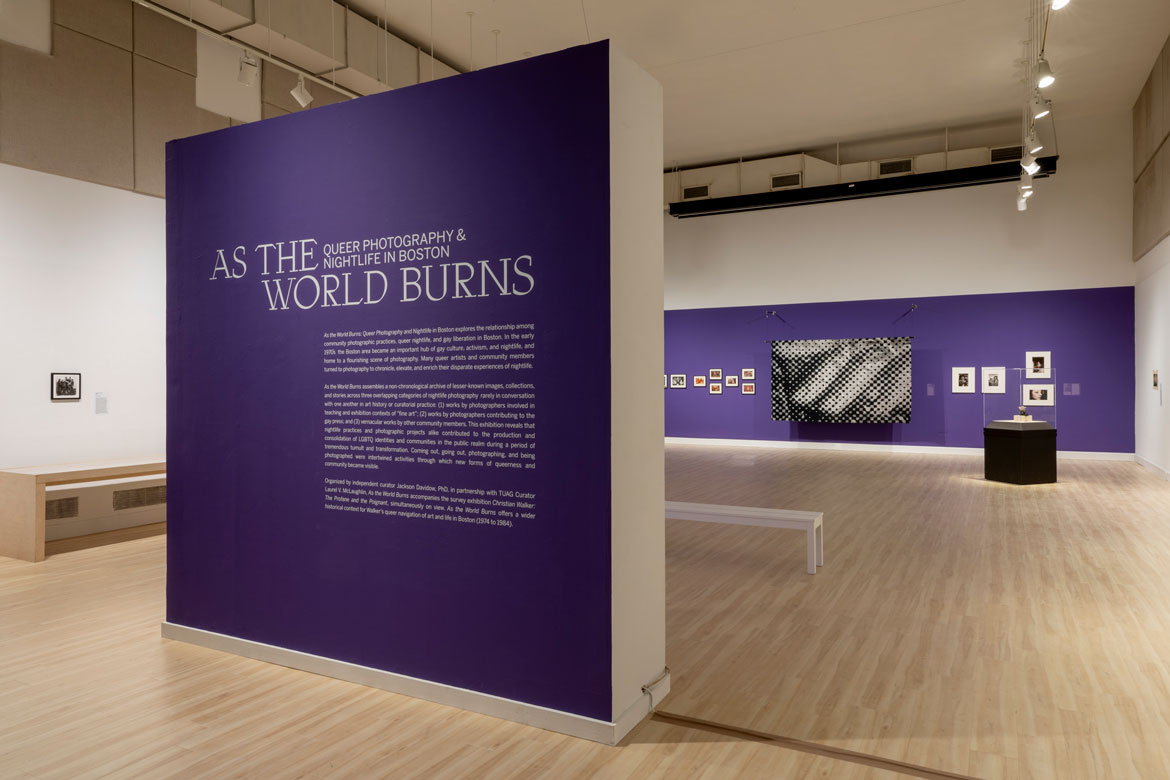
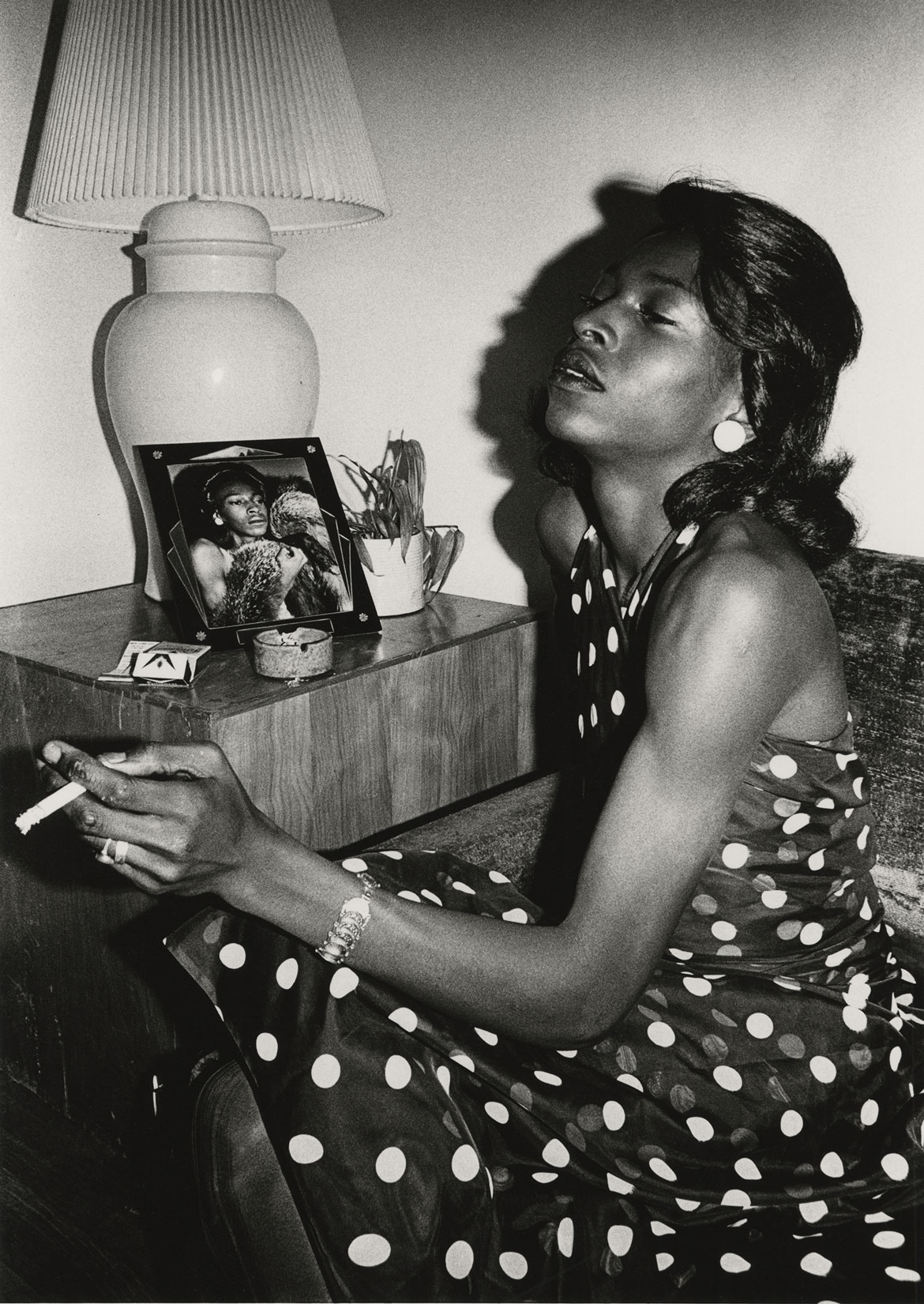
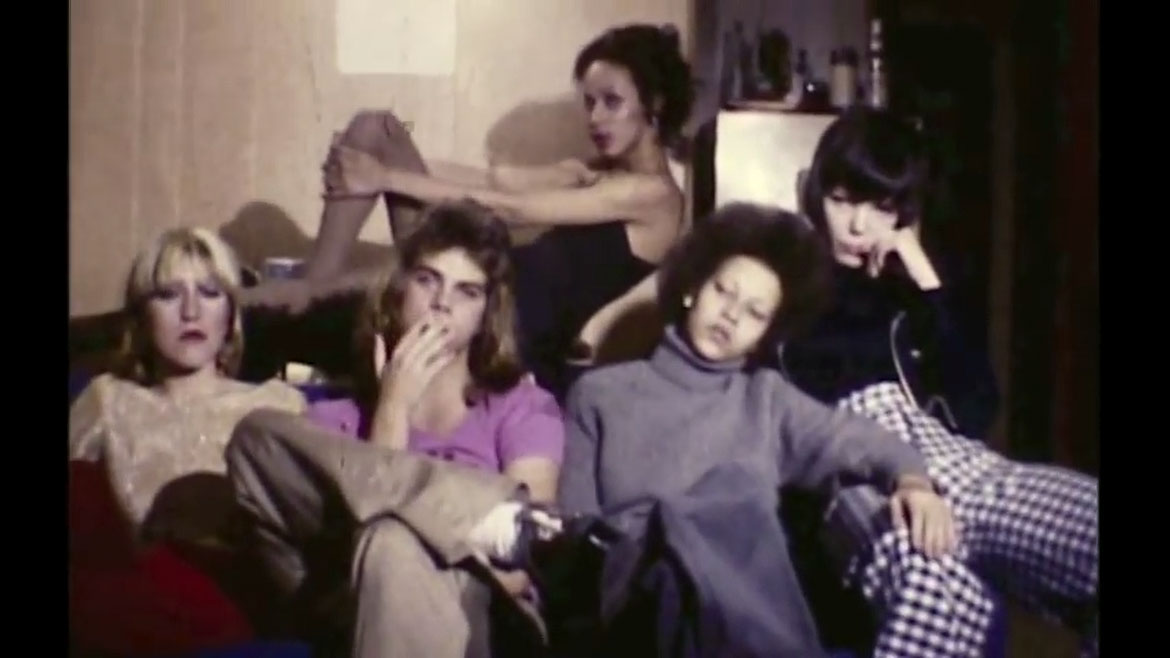
![Patricia A. Gozemba, "Untitled [Fran’s Place]," 1983, black and white photograph. (Courtesy of The History Project)](https://gregcookland.com/wonderland/wp-content/uploads/2024/04/picPatricia-A-Gozembo-AsTheWorldBurns240324_P1102396w.jpg)
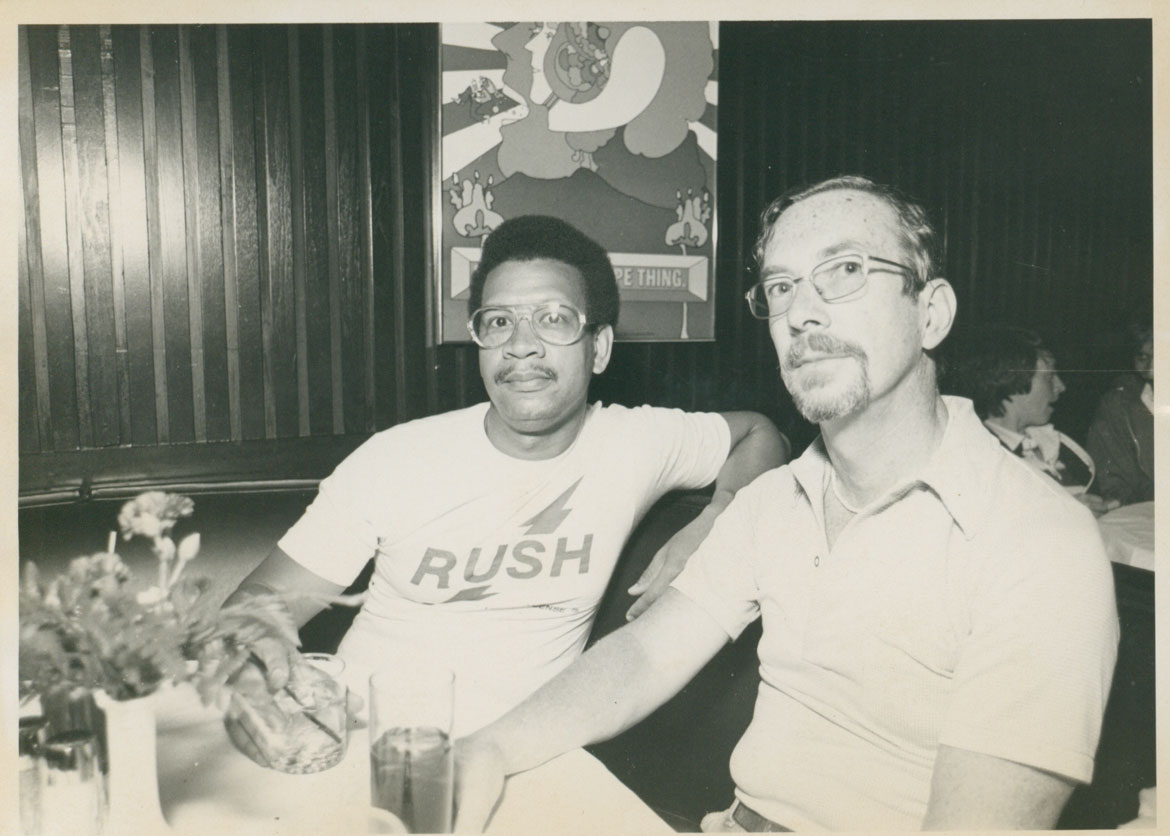
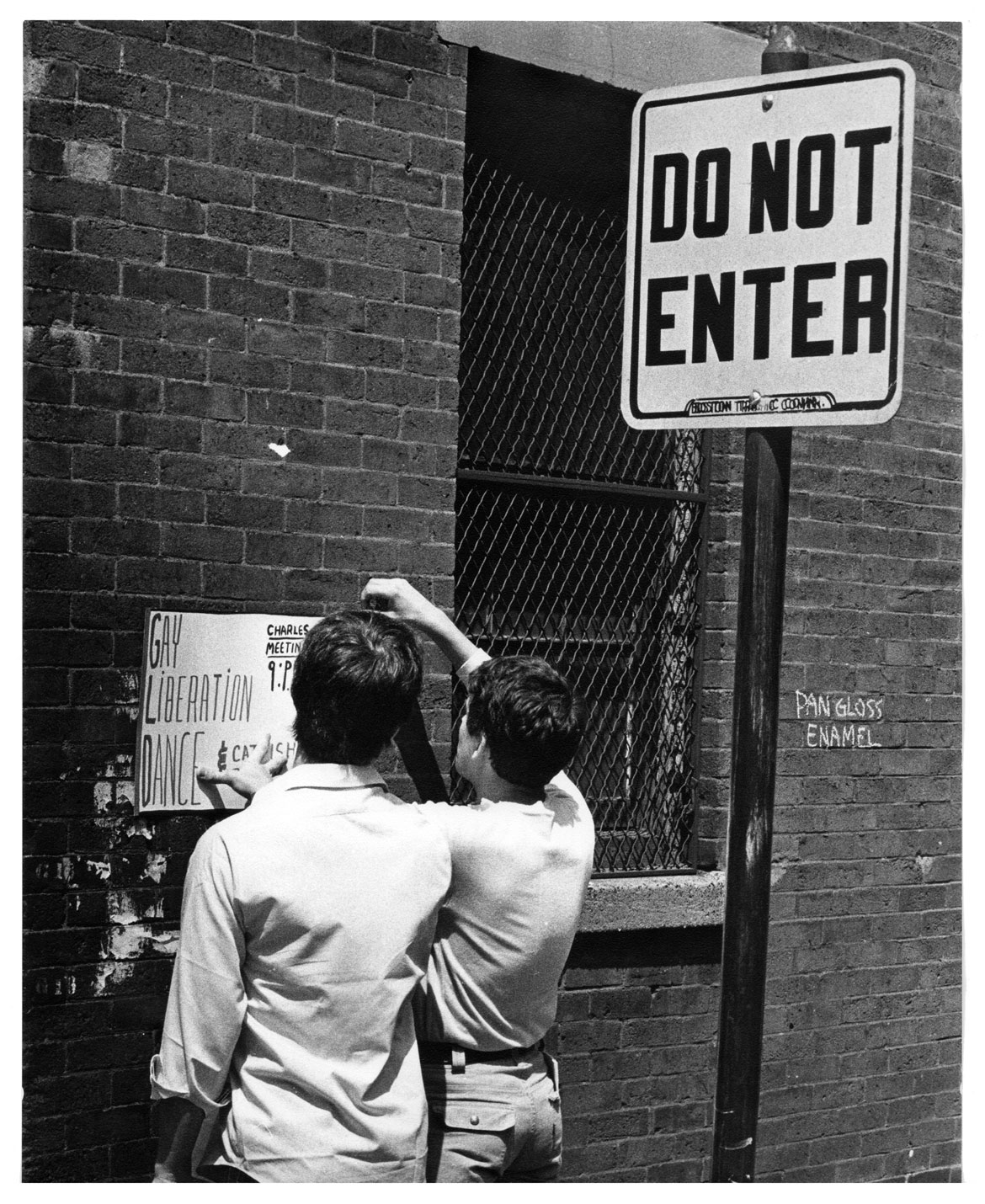
![Jim McGrath and others, "Untitled [Playland]," 1950s to 1980s, photographs. (Collection of The History Project)](https://gregcookland.com/wonderland/wp-content/uploads/2024/04/picJim-McGrath-AsTheWorldBurns240324_P1102412w.jpg)
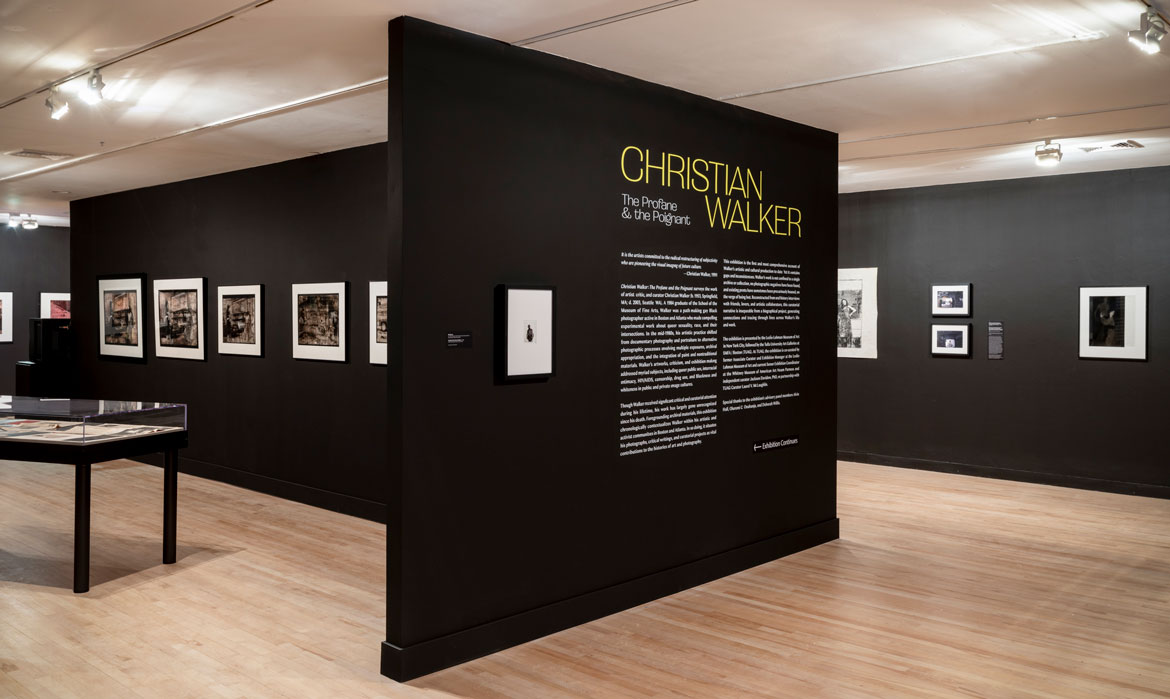
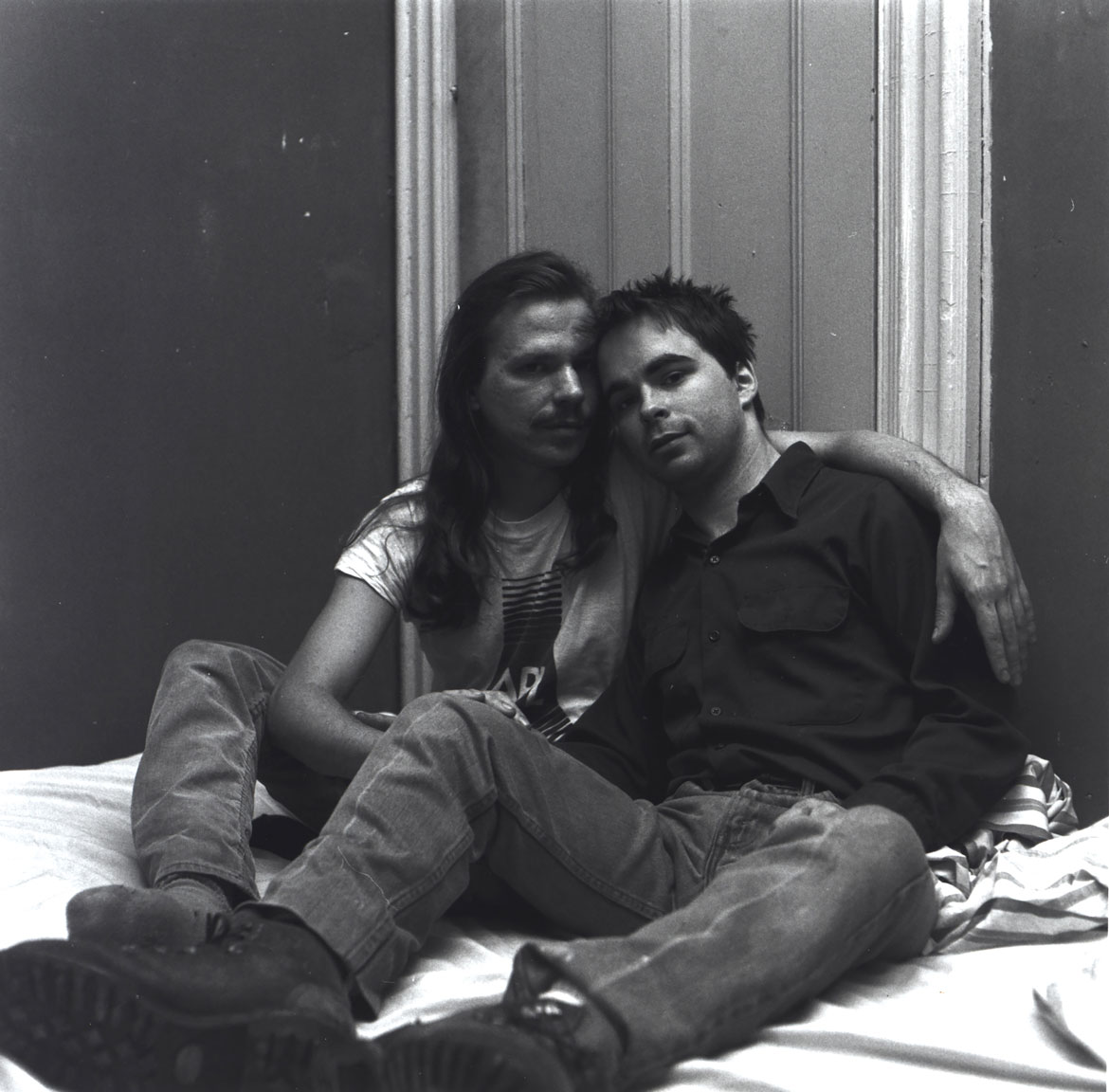
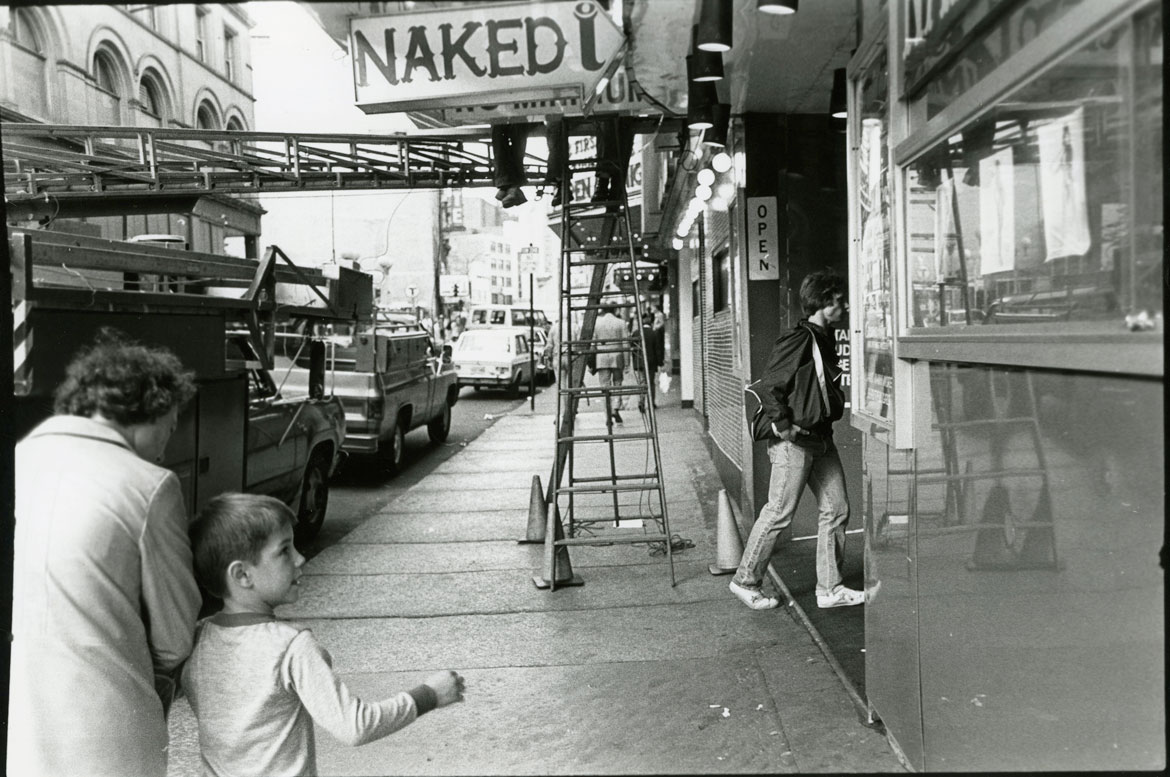
![Jim McGrath and others, "Untitled [Playland]," 1950s to 1980s, photographs. (Collection of The History Project)](https://gregcookland.com/wonderland/wp-content/uploads/2024/04/picJim-McGrath-AsTheWorldBurns240324_P1102412w530.jpg)